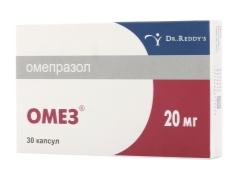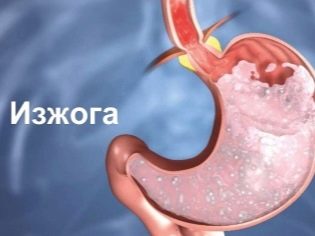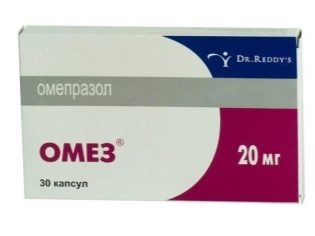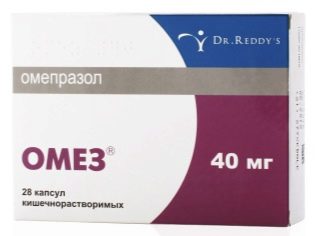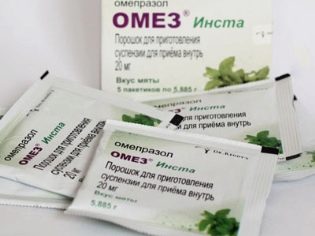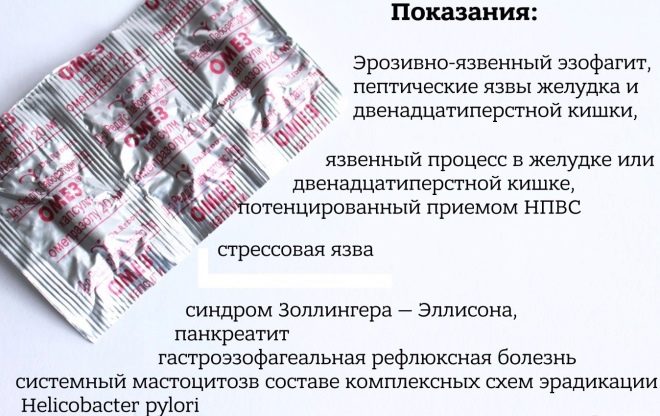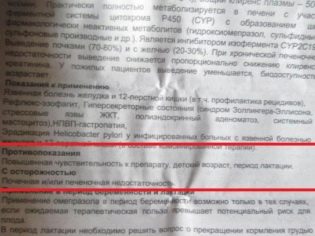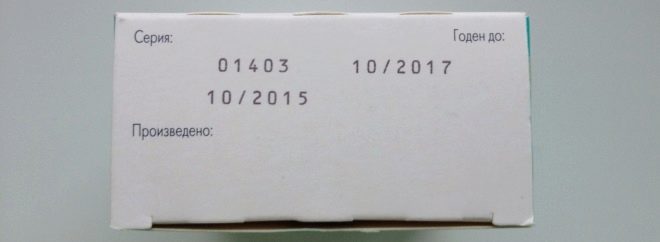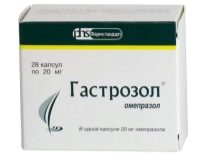At what age can Omez be given to children and how to use it?
Omez is one of the most popular drugs prescribed to adults for erosion or ulcers in the upper GI tract. It is often drunk to combat heartburn, as the result of taking Omez is a decrease in acidity.
Is this medicine permitted in childhood, when can it be given to a child and how does it affect the children's organism?
Release form and composition
Omez is presented in pharmacies with several options:
- Capsules with a dosage of omeprazole 20 mg. They are sold in 30 pieces per pack and are represented by hard gelatin capsules, which have a colorless body and a pink cap with black OMEZ inscription, and inside are white granules. Auxiliary components of such drugs are lactose, talc, hypromellose, mannitol and other substances.
- Enteric capsules containing 10 mg of omeprazole. In one package of such Omez there are 10 or 30 solid opaque capsules, in which the yellow-purple case is OMEZ 10. There are granules inside the capsules containing not only omeprazole, but also hypromellose, mannitol, crospovidone and some other substances.
- Enteric Capsulescontaining 40 mg of omeprazole. They are sold in packs of 28 pieces each and are represented by purple-yellow capsules with the inscription OMEZ 40.
- Lyophilisate from which the solution is prepared for intravenous injections. One vial of such Omez contains 40 mg of omeprazole. It looks like a white powder or a porous white mass shot down into a “cake”. Additional ingredients in the lyophilisate are edetate disodium and sodium hydroxide. In one pack for sale 1 bottle.
In addition, in pharmacies you can find capsules Omez D. In their composition, an antiemetic component is added to omeprazole in a dose of 10 mg - Domperidone at a dose of 10 mg.
There is also a drug called Omez Instarepresented by sachets of powder, from which mint flavor is obtained. One packet contains 20 mg of omeprazole.
Operating principle
Omez is referred to as proton pump inhibitors, since it is due to the inhibition of such an enzyme that its active component acts on the parietal cells of the stomach, secreting components of the gastric juice.
As a result of this influence, the final stage of the production of hydrochloric acid is inhibited, because of which the acid production is suppressed and the activity of the gastric juice decreases. In addition, omeprazole has a bactericidal effect on Helicobacter pylori.
Ingested Omez is inactive and begins to act only after being in an acidic environment (this is the environment in parietal cells) after about 1-2 hours.
The action of the drug in capsules lasts about a day. The higher the dosage of omeprazole used, the stronger the depression of the secretory function of the parietal cells will be.
Indications
Omez use:
- In the treatment of duodenal ulcer and stomach ulcer, as well as for the prevention of recurrence of this pathology.
- In the treatment of reflux esophagitis.
- When hypersecretory function of the stomach, for example, caused by gastrinoma or stress ulcer.
- With the defeat of the stomach due to the use of nonsteroidal anti-inflammatory drugs.
- In preparation for the operation, to prevent the stomach contents from being thrown into the respiratory tract.
Are children prescribed?
In the list of contraindications indicated in the annotations to all forms of Omez, you can see the children's age.But gastroenterologists often use such a drug in the treatment of children with the appearance of acute pathologies of the stomach.
In this case, babies under 5 years old Omez is prescribed very rarely, and its use is necessarily monitored by a doctor.
Giving capsules to a child without a doctor’s appointment is absolutely impossible.
Contraindications
The drug is not used for hypersensitivity to any of its components. Capsules and suspension are not used for disorders of carbohydrate metabolism.
Increased caution in the use of Omez require patients with severe pathologies of the kidneys or liver failure.
Side effects
During treatment with Omez, it may occur:
- diarrhea;
- pruritus;
- dizziness;
- nausea;
- allergic rashes;
- nervous excitement;
- bloating;
- decrease in the number of blood cells;
- headaches;
- bronchospasm;
- urticaria and some other adverse reactions.
When they appear, you should immediately tell these symptoms to your doctor.
Instructions for use
Omez capsules give up to food for about half an hour, offering to drink the drug with water. If it is impossible to swallow the medication, the granules from the capsule can be mixed with the acidified product (fruit puree, juice) and immediately given to the child in this form. Mixing the contents of the capsule with milk or carbonated beverage is prohibited.
Omez Insta is mixed only with water, adding 1-2 tablespoons to the contents of one sachet. As soon as the drug becomes a homogeneous suspension, it should be drunk immediately.
Injection Omez is administered intravenously. Before the injection, a 5% glucose solution in a volume of at least 5 ml is added to the vial, and when the lyophilisate is completely dissolved, the resulting solution is diluted with 100 milliliters of glucose solution and drip injection is performed for at least 30 minutes.
The dosage of the drug for each patient is chosen individually by the doctor, since to calculate it, it is necessary to take into account both the diagnosis and the baby’s body weight and age. The same parameters also affect the duration of capsule administration or injection.
Terms of sale and storage
All forms of Omez are sold in pharmacies by prescription, so you should consult a doctor before purchasing them.
The shelf life of the lyophilisate and Omez Insta bags is 2 years, the capsules are 3 years. Until it expires, the drug should be stored in a place hidden from small children at a temperature not higher than +25 degrees Celsius.
Reviews
Most of the reviews about the treatment with Omez talk about the high effectiveness of this medicine in the fight against heartburn, abdominal pain and other symptoms of peptic ulcer.
Parents confirm that the drug acts fairly quickly and is well tolerated by the majority of young patients.
The disadvantages of the drug include only its price, which is called high (compared with similar drugs from other manufacturers).
Analogs
Omez is most often replaced OmeprazoleBecause the active substance in these capsules is the same, and the price is slightly lower. Others may also be assigned instead of Omez. preparations based on omeprazole, for example, Ultop, Losek or Gastrozol. However, they are all used in childhood with caution and only as prescribed by a doctor.
Among other medications that are used in the treatment of peptic ulcer or other lesions of the stomach, esophagus and duodenum, children can be prescribed such drugs as Mikrasim, Rabelok, De nol, Zeercal, Almagel, Zulbeks and so on.
Some of them have the same mechanism of action as Omez, while others act quite differently and cannot be considered analogous to omeprazole, therefore the decision to use them in treating children should be taken by a gastroenterologist or other specialist.
For more information on the drug, see the next video.
